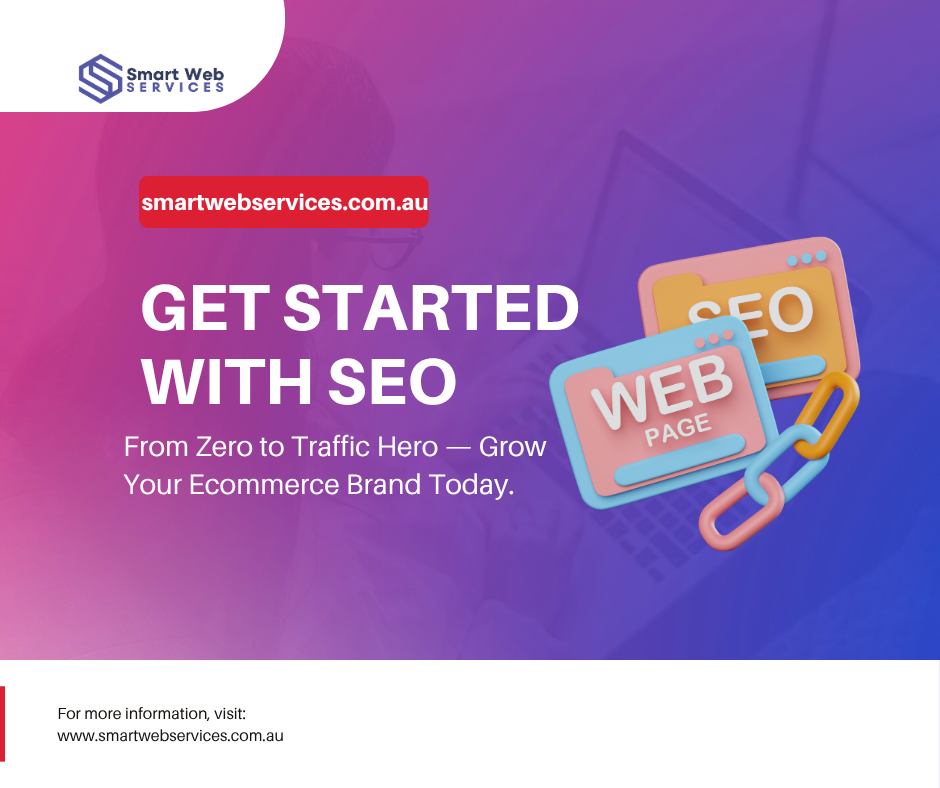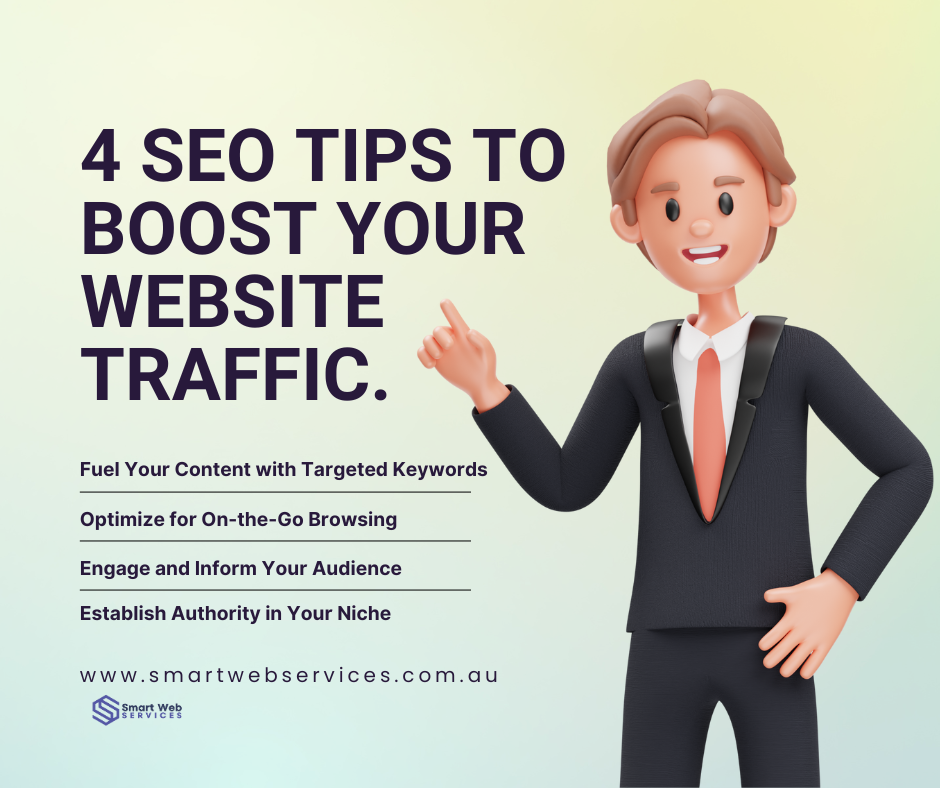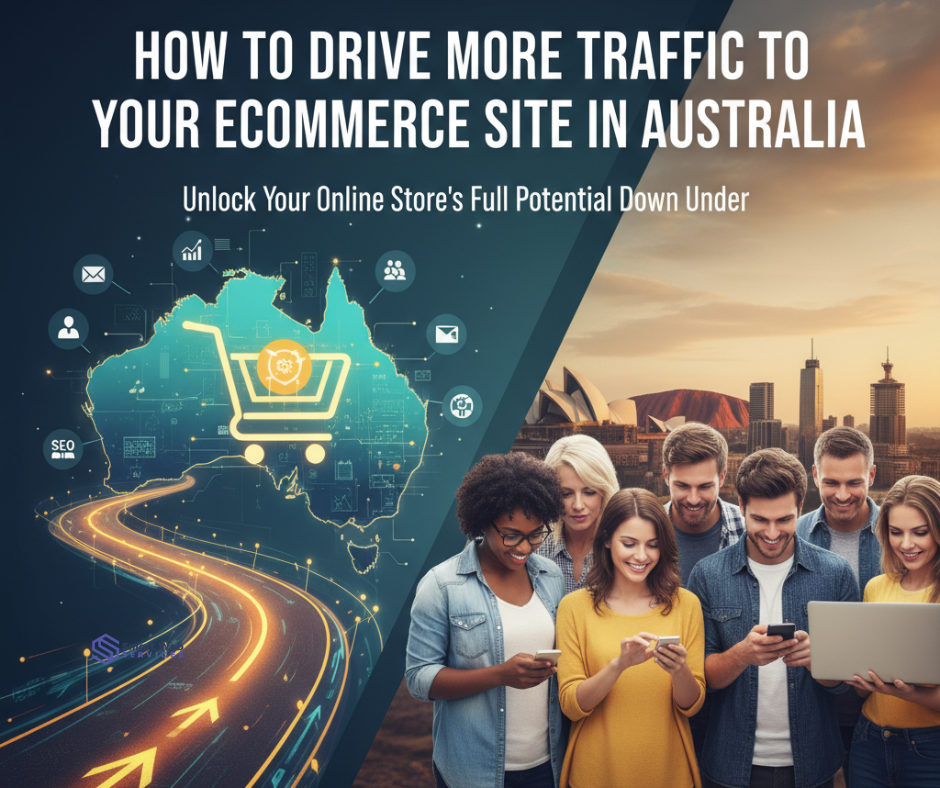In the fast-paced world of online shopping, simply having an ecommerce website isn’t enough — you need consistent, qualified traffic that converts into paying customers. For Australian ecommerce businesses, this means understanding your audience, optimising your online presence, and leveraging every marketing channel available.
If you’re wondering how to bring more eyes — and buyers — to your store, here’s a complete guide to driving more traffic to your ecommerce website in Australia.

1. Optimise Your Website for Search Engines (SEO)
Search Engine Optimisation (SEO) remains one of the most powerful ways to bring long-term, organic traffic to your ecommerce website. Start by researching what your target audience is searching for — terms like “best online electronics store Australia”, “cheap wireless earbuds Sydney”, or “fast shipping Melbourne” can give you clues about search intent.
Focus on:
- Optimising product titles and descriptions with relevant keywords
- Creating SEO-friendly URLs (e.g.,
/mobile-accessories-australia/) - Using alt tags for images
- Building internal links between product and category pages
- Claiming your Google Business Profile for local visibility
When done right, SEO ensures your products appear in front of Australian customers who are already ready to buy — without you paying for each click.
2. Leverage the Power of Content Marketing
Content is still king — especially for ecommerce. Blog posts, buying guides, and product tutorials not only build trust but also attract organic visitors from search engines.
For example:
- Write a blog on “Top 10 Affordable Tech Gadgets in Australia for 2025.”
- Create how-to guides like “How to Choose the Right Bluetooth Headphones.”
- Share seasonal shopping tips like “Best Mother’s Day Gifts in Australia.”
Each blog should naturally include relevant keywords and internal links to your products. This approach builds topical authority and keeps visitors exploring your site longer — which helps with SEO and conversions.
3. Run Targeted Paid Campaigns
If you’re new to ecommerce or launching new products, paid ads are a quick way to attract visitors. The key is targeting the right audience with the right message.
Here’s what works best for Australian ecommerce stores:
- Google Shopping Ads to show your products directly in search results
- Facebook and Instagram Ads for retargeting cart abandoners
- TikTok Ads to engage younger audiences with short, creative videos
- Pinterest Ads for visual products like fashion, décor, or gadgets
Tip: Always test different ad creatives, headlines, and audiences — and use retargeting pixels to bring back visitors who didn’t buy on their first visit.
4. Optimise Your Site for Mobile and Speed
Australian consumers are increasingly shopping via smartphones — so your website needs to be lightning-fast and mobile-friendly. A slow website not only frustrates visitors but also hurts your SEO rankings.
To improve site performance:
- Use mobile-responsive design
- Compress images and remove unnecessary plugins
- Use a CDN (Content Delivery Network) for faster load times across Australia
- Simplify checkout processes to reduce cart abandonment
The smoother your mobile experience, the higher your conversions — especially during seasonal peaks like Black Friday or Boxing Day sales.

5. Use Social Media to Build Brand Awareness
Social media isn’t just for posting pictures — it’s a traffic powerhouse when used strategically. Platforms like Facebook, Instagram, and TikTok are perfect for showing off your products through lifestyle content, customer reviews, and influencer collaborations.
Try these proven strategies:
- Post user-generated content (UGC) from real Australian customers
- Host giveaways and competitions to boost engagement
- Partner with local micro-influencers
- Share behind-the-scenes videos to humanise your brand
Remember: consistency builds trust. Keep your brand voice friendly, authentic, and relatable to your audience.
6. Capture and Nurture Leads with Email Marketing
Once someone visits your site, don’t let them slip away. Offer a discount code or a free gift guide in exchange for their email. Then, use email campaigns to turn browsers into loyal buyers.
Here’s how:
- Welcome Series: Introduce your brand and best-sellers
- Abandoned Cart Emails: Remind users to complete their purchase
- Product Recommendation Emails: Suggest complementary items
- Seasonal Campaigns: Promote holiday sales and special offers
Email marketing remains one of the highest ROI channels for ecommerce — because it reaches people who already showed interest in your store.
7. Build Local SEO and Community Connections
If you ship across Australia or have physical pickup locations, local SEO is your secret weapon. Add local keywords like “Sydney electronics repair”, “Melbourne tech accessories”, or “Brisbane online gadget store.”
Also, list your business in local directories, collaborate with nearby influencers, and get featured in Australian blogs or online magazines. This boosts both your visibility and credibility.
8. Encourage Customer Reviews and Testimonials
Positive reviews build trust and influence new customers. Encourage happy buyers to leave a review after each purchase — and feature those testimonials prominently on your site and social media.
You can even create a “Customer Stories” section on your website showcasing real-life experiences. This boosts engagement and helps potential customers feel confident buying from you.
9. Analyse and Improve Through Data
Every successful ecommerce business is built on insights. Tools like Google Analytics, Meta Pixel, and Hotjar show you where your visitors come from, which products they view, and where they drop off.
Track:
- Traffic sources (organic, social, paid)
- Conversion rates
- Bounce rates
- Best-performing pages
Use this data to tweak your marketing strategy, optimise your landing pages, and continuously refine what’s working best.
10. Partner with a Professional Digital Marketing Agency
If managing SEO, ads, content, and analytics sounds overwhelming, you can always collaborate with an expert team like Smart Web Services. With experience in ecommerce SEO, web design, and marketing strategies, they help Australian businesses grow their online presence, attract traffic, and increase conversions — without the guesswork.
Final Thoughts
Driving more traffic to your ecommerce site in Australia takes time, consistency, and a mix of smart strategies. From SEO and content creation to paid campaigns and social engagement — every tactic plays a role in attracting and converting the right audience.
Start small, track everything, and optimise often. With a well-planned digital marketing strategy, your ecommerce store can stand out in the Australian market and achieve long-term success.



